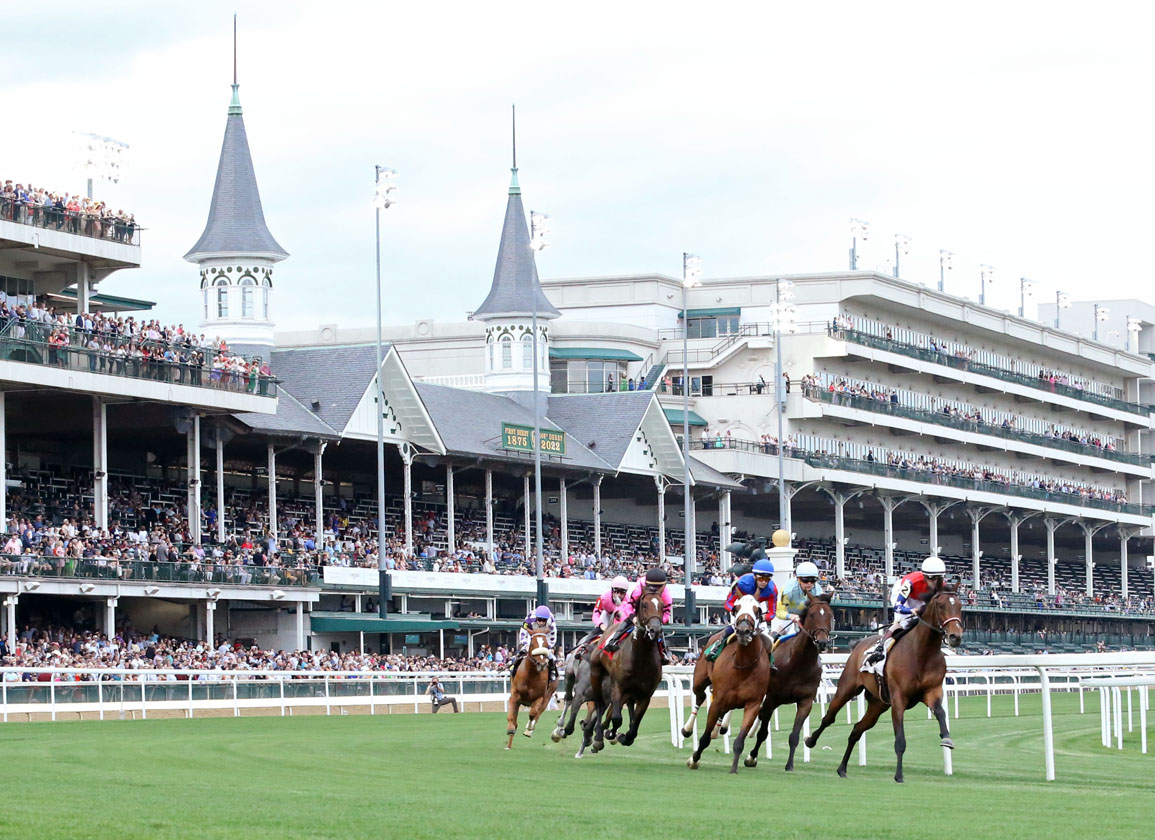By T. D. Thornton
The problematic, $10-million turf course that was installed at Churchill Downs prior to the 2022 spring season will be getting another maintenance break that will mean no grass racing in Louisville for the upcoming Sept. 12-29 meet.
Usage of the Churchill turf course has been curtailed on several occasions over the past two years because of concerns over its growth, maturity and root establishment.
Darren Rogers, Churchill's senior director of communications, told TDN on Thursday that track management expects the course to be usable in time for the autumn meet that spans Oct. 27-Dec. 1.
“Absolutely. That won't be a problem,” Rogers said.
September, Rogers said, “is just a three-week meet, and with the plethora of grass opportunities at [the tail end of] the Ellis Park meet, plus all the [grass-only] racing at Kentucky Downs, and then Keeneland starting, we thought it's best not to run over the turf to try to maximize what we're doing to enhance it for the fall meet and next spring.”
There was no turf racing in 2021 from September through November while Churchill installed the new course. Then in the spring of 2022, six weeks after the course was unveiled, management capped grass races to a maximum of two per day and moved 19 races listed in the condition book to the main dirt track in order to give the grass a better chance to grow. The track later suspended turf racing for a brief period that same season and subsequently cancelled several stakes at an August mini-meet.
The course didn't get fully used at the 2023 spring meet because Churchill cut its meet short and moved all of its racing to Ellis Park in response to the deaths of 12 Thoroughbreds.
In the fall of 2023, Churchill conducted just 20 turf races at the September meet and another 20 at the October/November meet.
After winter and spring maintenance to start 2024, the course was able to handle 74 grass races at the recently concluded spring season, but the turf showed signs of strain from the usage.
“As you know, we've had our challenges along the way,” Rogers said. “And we're committed to getting it to perform to its maximum [by] doing whatever it takes. It's a work in progress.
“This year, for the spring meet, it was much improved from last fall,” Rogers continued. “But frankly, we're still dissatisfied with the course's status. We had a number of talks with our team–consultants, engineers, horsemen–and the remedies that we introduced this spring kind of have us heading in the right direction. And we said at that time that our plan is going to be more vigilant in the management of the organic materials.”
Rogers detailed the most recent work to the course that was completed over the first two weeks of July.
“We closed June 30, and on July 1, we scalped the turf course, cutting the grass real low. That exposes the stems of the grass and the soil to sunlight so it stimulates growth. We did a technique known as verticutting. The blades kind of knife through the soil, and they remove organic buildup, which basically allows it to breathe better.
“Next we [aerated] the soil vertically and horizontally,” Rogers said. “That kind of redistributes it across the surface and removes soil from the root zone. And then, like we did this past March, we did this process called DryJect. It's a procedure where you inject different angular sand that goes down about six inches deep and provides stability and eliminates the looseness. Apparently, that enhances the root zones, and increases oxygen levels and nutrient retention.
“And then lastly, we sprigged about a thousand bushels of Iron Cutter Bermuda grass around the course, then fertilized it,” Rogers said.
At the moment, Rogers said, “It looks brown and yellow. But the green's coming back right now, so the team is hopeful that these remedies kind of have us heading in the right direction. It's been very hot and humid, but that's pretty typical this time of year. That's one of the challenges with this turf course, is we really go through three different seasons: the early spring, the summer, and the cold fall.”'
Trainer Mike Maker, who leads all conditioners in both starts and wins over the new Churchill course with a 23-for-107 strike rate since 2022, told TDN that, “Thankfully, Kentucky Downs will be in September. We'll try to run as much as we can there. Of course, fields are going to be full and they're not going to run everything that we want, but it is what it is. If Churchill is ready for November, then we'll be okay. We can't worry about stuff we don't have control over.”
Not a subscriber? Click here to sign up for the daily PDF or alerts.






